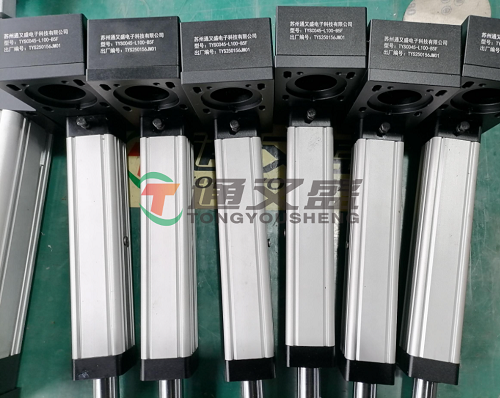Compared with traditional actuators such as pneumatic cylinders and hydraulic cylinders, explosion-proof electric cylinders exhibit remarkable advantages in many aspects. These advantages enable explosion-proof electric cylinders to stand out in fields with extremely high requirements for precision and efficiency, such as 3C electronics manufacturing.
In terms of precision:
The positioning accuracy of explosion-proof electric cylinders can easily reach ±0.01mm or even higher. This is attributed to their precise ball screw-nut transmission mechanism and advanced servo control system. In 3C electronics manufacturing, for example, in the process of attaching a mobile phone screen, the screen needs to be accurately aligned with the phone body and a uniform pressure needs to be applied. The error must be controlled within a very small range; otherwise, it will affect the product quality and user experience.
Relying on its high-precision positioning ability, the explosion-proof electric cylinder can ensure the accuracy of screen attachment and effectively improve the yield rate of products. However, due to the compressibility of gas, traditional pneumatic cylinders can hardly achieve such a level of positioning accuracy. Usually, the error is around ±0.1mm, which is far from sufficient for high-precision 3C electronics manufacturing.

In terms of efficiency:
Explosion-proof electric cylinders have a fast response speed and can complete actions such as starting, stopping, and changing speed within a short time, which greatly improves production efficiency. On the assembly production line of 3C electronic products, explosion-proof electric cylinders can quickly and accurately complete operations such as grabbing, transporting, and assembling components, reducing the waiting time in the production process and increasing the operation speed of the production line.
Moreover, the running speed of explosion-proof electric cylinders can be precisely adjusted according to actual needs, and they can maintain stable operation from low speed to high speed, adapting to different production process requirements. In contrast, the working speed of hydraulic cylinders is generally slow, usually around 35mm/s, which is inadequate in 3C electronics manufacturing that requires fast production.
